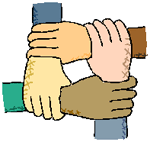News
2015? 2050? Ever?
Sep 20, 2008
 In a unique and heartening display of unanimity and cooperation, the nations of the world came together in 2000 and signed the United Nations Millennium Declaration, pledging to “spare no effort to free our fellow men, women, and children from the abject and dehumanizing conditions of extreme poverty.”1 Their blueprint for ending world poverty by 2015 consisted of eight goals:
In a unique and heartening display of unanimity and cooperation, the nations of the world came together in 2000 and signed the United Nations Millennium Declaration, pledging to “spare no effort to free our fellow men, women, and children from the abject and dehumanizing conditions of extreme poverty.”1 Their blueprint for ending world poverty by 2015 consisted of eight goals:
- Eradicate extreme poverty and hunger
- Achieve universal primary education
- Promote gender equality and empower women
- Reduce child mortality
- Improve maternal health
- Combat HIV/AIDS, malaria, & other diseases
- Ensure environmental sustainability
- Develop a global partnership for development
Predictably, the least progress has been shown in areas affecting women. Half a million prospective mothers die annually in childbirth or of complications from pregnancy. Women are drastically underrepresented in government. Most employed women are in vulnerable jobs or are unpaid family workers. Additionally, sub-Saharan Africa is a virtual basket case, where the primary goal of reducing poverty by one-half by 2015 will almost surely not be met. The area also shows much slower progress meeting the other seven goals. And carbon dioxide emissions have continued to increase, despite the clear and present danger they pose.
“The single most important success to date has been the unprecedented breadth and depth of the commitment to the [Millennium Development Goals (MDGs)].”2 Therein lies our greatest hope. The MDGs are a framework around which we can coordinate a full-court assault on the perils that face life on earth. Increasingly, governments, foundations, NGOS, and civil societies are rallying around that framework. Perhaps by 2015, even if those goals are not met, we will have crafted an alliance which—all together now—can meet those goals in a generation or two.
____________________
1 Millennium Development Goals Report 2008, pg. 3
2 Op cit., p. 4
Getting Anti-Terrorism Right
Sep 14, 2008
 Haiti is a mess. Probably everyone would agree with this, even ATN Golden A awardee Paul Farmer.
Haiti is a mess. Probably everyone would agree with this, even ATN Golden A awardee Paul Farmer.
In late 2006 and early 2007, however, a United Nations operation in Haiti served as a model for the way things ought to be accomplished in a dangerous world. Gangs of thugs had taken over Port-au-Prince and were operating out of the city slums, kidnapping, robbing, and murdering at will, and with the financial backing of various political factions. After a spate of child kidnappings, the president of Haiti, René Préval, had enough and called for a United Nations peace enforcement initiative which ultimately defeated the gangs.
The U.N. needed—and received—a lot of help in their operation, from a mandate from the top to local military and police involvement, and reaching down to the level of the populace for actionable intelligence. A Special Report from the United States Institute of Peace (USIP)1 entitled Haiti: Confronting the Gangs of Port-au-Prince, by Michael Dziedzic and Robert M. Perito, offers a detailed analysis of the operation, its successes and its shortcomings. Together with its extensive recommendations for ameliorating those shortcomings, it is a blueprint for success in urban conflict against a nebulous foe entrenched within a civilian population. And it even makes from some exciting reading.
Its bottom line: “[T]he United Nations must be capable of mounting assertive operations to defend and enforce its mandates, and ... given the proper enabling conditions and the will to act, it is capable of doing so quite successfully.”
____________________
1 The USIP is “an independent, nonpartisan institution established and funded by Congress. Its goals are to help prevent and resolve violent international conflicts, promote post-conflict stability and development, and increase conflict management capacity, tools, and intellectual capital worldwide.”
Copyright © 2008 All Together Now.